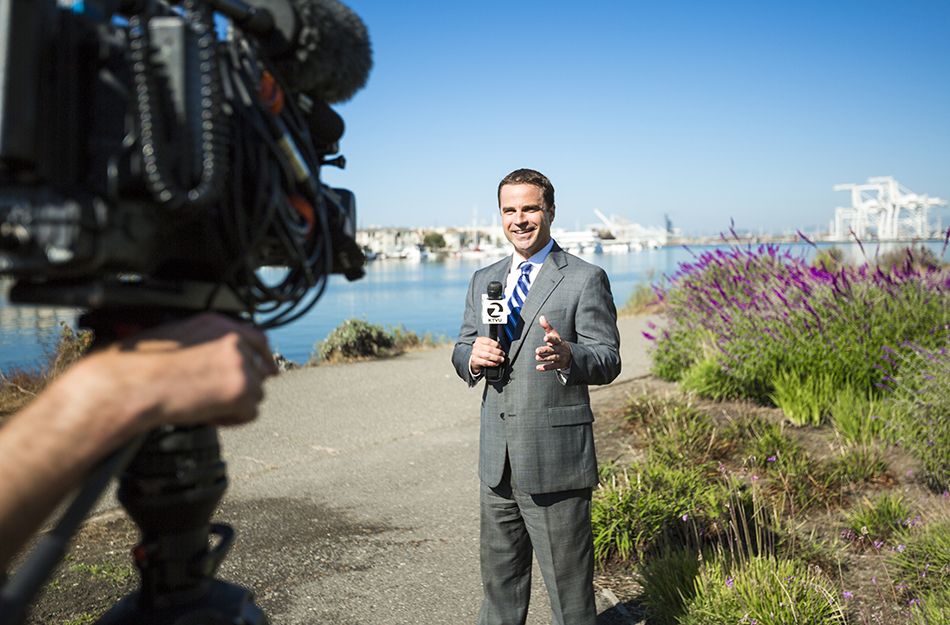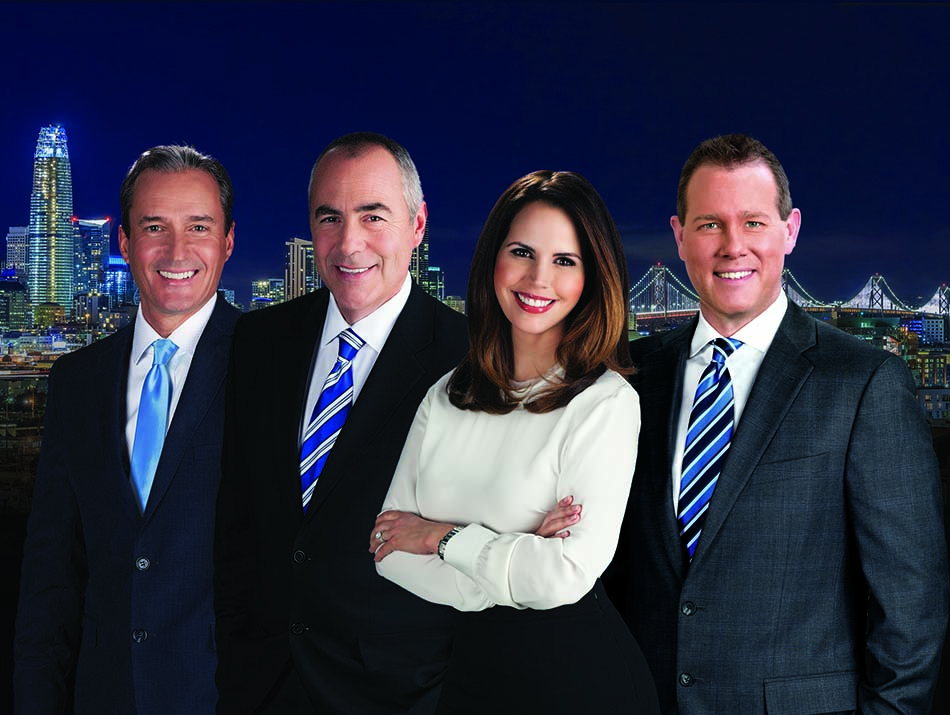Bay Area Stations Are Local News Innovators
As befits the Silicon Valley base, San Francisco-Oakland-San Jose outlets are trying new things

With much of the nation’s — and the world’s — technology innovations coming from the Bay Area, stations in San Francisco-Oakland-San Jose are wholly focused on reaching consumers on platforms beyond traditional TV. KPIX premiered streaming news site CBSN San Francisco Bay Area in fall 2019; KTVU connects with users on both Tubi and OTT product FLX; KNTV-KSTS launched newscasts for various digital platforms (The Fast Forward for KNTV, Al Momento for KSTS); and KRON connects with users on the go via its KRONon mobile news product.
“We’ve invested a lot of time and resources into KRONon,” said Jim Rose, KRON VP and general manager, “and it seems to be paying off.”
The Bay Area market is DMA No. 6. Fox owns KTVU and independent KICU, branded on-air as KTVU Plus. ABC holds KGO. CBS owns KPIX and The CW affiliate KBCW. NBCUniversal Local owns NBC-aligned KNTV and Telemundo station KSTS. Nexstar Media Group has MyNetworkTV-affiliated KRON. Univision owns KDTV and KFSF. Stryker possesses independent KOFY.
Also Read: KGO Takes a Five-Subject Newsroom Approach
Comcast is the primary pay TV operator in San Francisco-Oakland-San Jose.
Fox Television Stations acquired KTVU in 2014 and the station is a power. At 6 a.m. in May, KTVU won households and the 25-54 demo. KGO edged out KPIX in the 5 p.m. household race, and KTVU won the demo derby. At 6 p.m. in May, KPIX nipped KGO in households and KDTV got past KTVU in 25-54. At 11 p.m., KPIX posted a 2.2 in households, ahead of KTVU’s 1.9, KGO’s 1.8, KNTV’s 1.2 and KDTV’s 1.0. In the demo race at 11, KTVU had a 0.8, KGO and KDTV a 0.6, KPIX a 0.5 and KNTV a 0.3.
KTVU’s 10 p.m. news averaged a 3.6 household rating in May, and 1.8 in the demo. KRON had a 1.0 and a 0.4 at 10.
Broadcasting & Cable Newsletter
The smarter way to stay on top of broadcasting and cable industry. Sign up below
Lots of News
KTVU-KTVU Plus cranks out 89 hours of news a week, including a 7-8 p.m. newscast on the independent, which offers Modern Family, The Big Bang Theory and Seinfeld during primetime.
“Our news reporting is very direct and covers the community’s needs, and our talent is well respected and trusted,” said Mellynda Hartel, senior VP and general manager of the Fox duopoly. “KTVU has a long history of delivering the news without a lot of fluff.”
Frank Somerville, evening anchor at Fox 2, went on leave in early June for health reasons.
Bay Area TV insiders say the race is tightening, and KGO is focused on taking over the top spot. Tom Cibrowski, KGO president and general manager, said ABC7 has some real momentum. “We’re making a run at them,” he said. “Our goal is to be the outright leader in this market.”
The station revamped its beat strategy (see sidebar) to focus on critical issues in the Bay Area, and has found that documentaries work well on the streaming platforms, which include a popular network owned by its parent called Hulu. One documentary, 32 Seconds: A Deadly Night in Rome, focused on the murder of a police officer in Italy, allegedly by two Bay Area students.

“The longer-form content strategy for OTT has been super successful,” Cibrowski said.
ABC7 launched a 3 p.m. newscast called Getting Answers during the pandemic. The station’s NextGen Advisory Council brings people 18-24 to the station to give insights on what they want to see from KGO.
Kevin Walsh, president and general manager of KPIX-KBCW, called CBSN San Francisco Bay Area a differentiator for the station. Featuring live streams of KPIX-KBCW’s newscasts and additional digital-only newscasts, CBSN San Francisco Bay Area was the fourth CBSN Local product to launch, following CBS-owned stations in New York, Los Angeles and Boston.
“It has really proven valuable in terms of giving consumers a different platform and a different way to find our content,” said Walsh. “Giving us the ability to stay on the air 24/7 has been invaluable.”
Online Differentiators
KRON’s mobile news product launched in February 2019 and initially had a $2.99 monthly user fee. The charge was scrapped as the pandemic rolled in, and it’s now free and ad-supported. KRON cranks out 122½ hours of news per week, for both linear TV and KRONon. A 3 p.m. newscast launched last September.
Jim Rose took over as KRON general manager in mid May. He called the station, which had been an NBC affiliate until 2001, “resurgent.”
“The call letters are pervasive in this market — people know the station,” he said. “That’s a luxury in this day and age.”
With Stephanie Adrouny heading up news, KNTV added 5:30 and 7 p.m. newscasts June 7, and moved NBC Nightly News with Lester Holt to 6:30 p.m. from its 5:30 perch. Janelle Wang and Raj Mathai anchor the 5:30 p.m., and Mathai anchors the 7 p.m., which Stacy Owen, president and general manager of KNTV-KSTS, said is “designed to be a two-screen experience” with a strong social component.
Mathai heads to Tokyo to cover the Summer OIympics, his sixth, while Carlos Yustis covers his third Games for KSTS. NBC has that, then the Winter Olympics and Super Bowl in early 2022. “We have the pedal to the metal in the next eight months,” Owen said.
The Olympics are “a big part of what we do, and a big differentiator in the market,” added Owen, who noted that some new competitions, involving surfing and skateboarding, are well suited for the California lifestyle.
Univision has a full plate of offerings in the Bay Area, with KDTV and UniMas-
affiliated KFSF, along with three radio stations. “You kind of get the whole whammy with us,” said Raul Rodriguez, president and general manager of the Univision Bay Area properties.
Rodriguez mentioned three “passion points” for the Hispanic community in the region: news, sport and music, with the Univision properties delivering all three.
“Univision Contigo” (Univision With You) viewer advocacy segments include “Contigo A Salvo,” which helps the community stay safe in the ocean. “People pay attention and listen to us,” said Rodriguez.
Tourism is a giant economic driver in the Bay Area, and is getting back up to speed after the COVID lockdown. Restaurants are open again. “The market is definitely showing some health,” Hartel said.
The GMs speak of a diverse marketplace, overspilling with natural beauty, nightlife and things to do outdoors.
The Bay Area is, of course, home to Silicon Valley and all the big brains figuring out the next killer app, whether it’s self-driving cars, social media or something else. “The innovation and the ideas here are pretty incredible,” said Cibrowski. “There’s no letup to the amount of great ideas, and the amount of smart and dynamic people that live here is incredible too.” λ
Michael Malone is content director at B+C and Multichannel News. He joined B+C in 2005 and has covered network programming, including entertainment, news and sports on broadcast, cable and streaming; and local broadcast television, including writing the "Local News Close-Up" market profiles. He also hosted the podcasts "Busted Pilot" and "Series Business." His journalism has also appeared in The New York Times, The L.A. Times, The Boston Globe and New York magazine.

